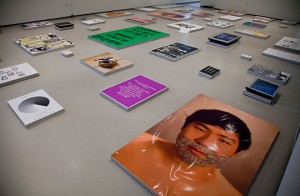Graphic Design Programs
Graphic design programs differ a great deal from school to school. Due to the industry growth, many institutions are placing a greater emphasis in their graphic design program. Advancements in technology have created a demand in fields that were nonexistent in the graphic design field 2 decades ago. These advancements have broadened the graphic design industry, creating a need in many unique fields. Graphic design programs offer a large variety of study fields, all within the graphic design scope.
Most graphic design programs offer many different and more specific areas of focus to study while in school. Especially if you are seeking a graduate degree, there are more and more areas of scope that you can focus your studies on, thus narrowing your field, and allowing you to become more specialized and skilled in your particular interest field. Now that technology has enhanced our world, we have fields of study within the graphic design program such as game design, computer and art design, 3-D design, architectural design and even fashion design.
Choosing a Graphic Design Program
Most schools offer a graphic design program, but you want to be sure that you attend the school that has the best program to suit your interests and that meets your other qualifications, such as location, cost, etc. Before choosing your graphic design program, you should research each school thoroughly. This would include the basics, such as location, cost and degrees offered, but you should also research the actual program itself. The faculty is vital to any great graphic design program. The school can only be as good as the people teaching there. Also, find out what prior graduates are doing and view their work. Also, what jobs do they have? What is the average placement from the program? What is the average annual income for a graduate of this school, in this program? These things will give you a sense of the program as a whole and will allow you to make the most educated decision about your graphic design program.
It is difficult to choose only 3 graphic design programs to label as “the best” in the nation. There are many great programs available. Below is a list of our top 3 very best graphic design programs.
- Rhode Island School of Design
- Yale
- California College of the Arts
RHODE ISLAND SCHOOL OF DESIGN
No one can argue that Rhode Island School of Design is the very best graphic design schools in the nation. It is located in Providence, Rhode Island. It was founded in 1877, and is known throughout the world for their design program. Enrollment is approximately 1,880 for undergraduate degrees and 330 graduate students. Students must take a 3 drawing “home test” when applying for entrance. To begin your research, find out more about Rhode Island School of Design at www.risd.edu/
YALE SCHOOL OF ART
Yale, ever heard of it? Yale University is one of the best Universities in the United States. Yale School of Art is one of 12 constituent schools of Yale University. Yale School of Art is a professional art school and offers one of the best graphic design programs in the nation. In 1951, the “School of Graphic Arts” as it was called then, was formed. It was the first school in the United States to offer a graduate program in graphic design. To begin your research, visit Yale School of Art website at art.yale.edu/
CALIFORNIA COLLEGE OF THE ARTS
Located in downtown San Francisco, with another location in Oakland, California College of the Arts or CCA, is one of the premier art programs in the United States. It was founded in 1907, and is known throughout the world for its broad interdisciplinary programs in art, design and writing. CCA is widely regarded as one of the leading design institutions in the world. To research their program more thoroughly, visit www.cca.edu/
Other Notable Graphic Design Programs
There are many other graphic design schools that are also noteworthy, including Virginia Commonwealth University, the Pratt Institute, Marlyland Institute College of Art, Carnegie Mellon, and School of Visual Arts.



